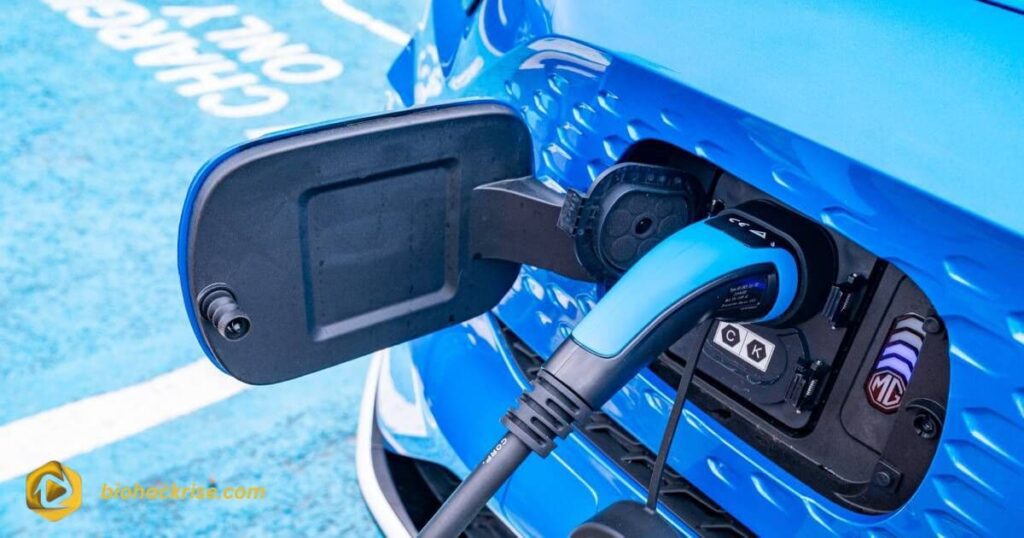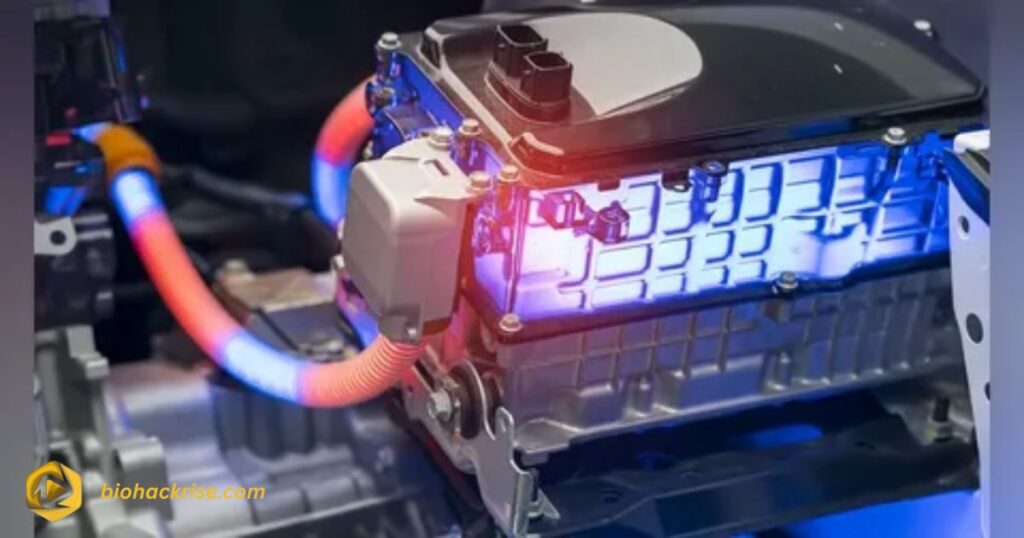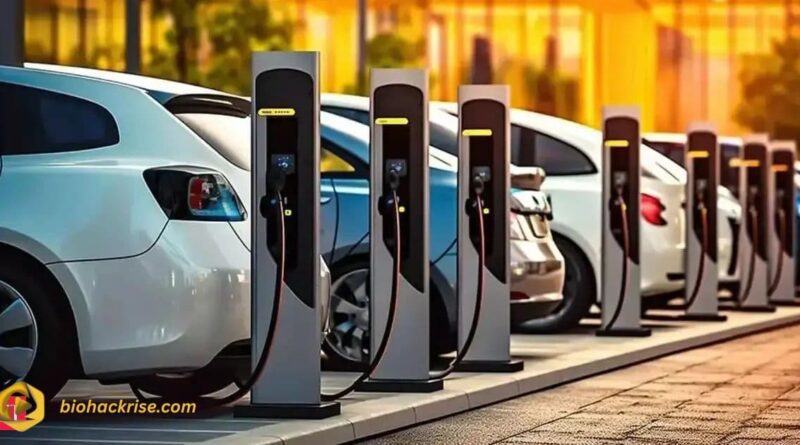Do You Have to Charge a Hybrid Car?
The question “Do you have to charge a hybrid car?” refers to understanding whether hybrid vehicles require external charging to operate. The answer depends on the type of hybrid, conventional hybrids (HEVs) recharge automatically through regenerative braking and the gasoline engine, while plug-in hybrids (PHEVs) can be charged externally using a power outlet or charging station.
Standard hybrids don’t need manual charging, making them convenient for all types of drivers. Plug-in hybrids, however, benefit from charging to maximize electric-only driving range and reduce fuel consumption. In essence, charging depends on the hybrid model you own and how you drive it.
Ever wondered if your hybrid car needs to be plugged in every night? You’re not alone! The confusion between hybrids and plug-in hybrids often leaves new car owners scratching their heads. Understanding how these innovative vehicles recharge could help you save money, fuel and the planet all at once.
Not all hybrid cars need to be charged. Conventional hybrids recharge themselves while driving, while plug-in hybrids offer the option to charge for extra electric range. Charging a plug-in hybrid enhances performance and efficiency but isn’t required for everyday driving. This flexibility makes hybrids perfect for both long trips and short commutes.
Understanding How Hybrid Cars Work
Before diving into whether you need to charge a hybrid car, it’s essential to understand how these vehicles operate. A hybrid car combines two power sources: an internal combustion engine and an electric motor powered by a battery. These systems work together to maximize fuel efficiency and reduce emissions.
When driving, the electric motor handles low-speed travel and stop-and-go traffic, while the gasoline engine takes over during highway speeds or when extra power is needed. The magic lies in how seamlessly both systems switch roles without affecting performance.
Two Main Types of Hybrid Cars
There are two main types of hybrid cars, and your answer to whether you need to charge one depends on which type you own:
- Conventional Hybrid (HEV – Hybrid Electric Vehicle):
- No external charging required.
- The battery is charged automatically through regenerative braking and the gasoline engine.
- Examples include the Toyota Prius Hybrid and Honda Accord Hybrid.
- No external charging required.
- Plug-in Hybrid (PHEV – Plug-in Hybrid Electric Vehicle):
- Requires external charging through a power outlet or charging station.
- Offers a larger battery that can power the car solely on electricity for short trips.
- Examples include the Toyota Prius Prime, Ford Escape PHEV and Volvo XC90 Recharge.
- Requires external charging through a power outlet or charging station.
In simple terms, you only need to charge plug-in hybrids, not standard hybrids.
Do Conventional Hybrid Cars Need Charging?
Let’s get straight to it, no conventional hybrid cars do not need to be plugged in to charge. The battery in a hybrid vehicle charges itself using regenerative braking and energy from the internal combustion engine.
When you brake or coast, the electric motor acts as a generator, converting kinetic energy into electrical energy, which recharges the battery. This is one of the key reasons why hybrid vehicles offer excellent fuel efficiency, especially in city driving.
Key Points About Conventional Hybrids:
- The driver never needs to plug in the car.
- Charging happens automatically while driving.
- Maintenance and operation are simpler compared to plug-in hybrids.
- Best for those who drive longer distances or don’t have easy access to charging stations.
Essentially, owning a conventional hybrid is like driving a traditional gasoline vehicle, with the added benefit of improved fuel economy and reduced emissions.
Do Plug-in Hybrid Cars Need Charging?

Yes, plug-in hybrids do need to be charged, but they can also operate without charging. Plug-in Hybrid Electric Vehicles (PHEVs) come with larger batteries that allow them to travel a certain distance (usually 20–50 miles) on electric power alone.
If the battery runs out, the gasoline engine automatically takes over, meaning you’ll never be stranded even if you forget to plug in your car. However, to get the maximum benefit, fuel savings, reduced emissions and electric-only driving, it’s best to charge your PHEV regularly.
Charging Plug-in Hybrids: How It Works
Charging a PHEV is simple and can be done in three main ways:
- Level 1 Charging (120V household outlet):
- Uses a standard home outlet.
- Adds about 3–5 miles of range per hour of charging.
- Ideal for overnight charging.
- Uses a standard home outlet.
- Level 2 Charging (240V home or public station):
- Requires a home charging unit or public charger.
- Adds about 12–25 miles of range per hour.
- Fully charges most PHEVs in 2–4 hours.
- Requires a home charging unit or public charger.
- Level 3/DC Fast Charging (rare for PHEVs):
- Mostly used for full EVs, but some PHEVs can use it.
- Charges up to 80% in under 30 minutes.
- Mostly used for full EVs, but some PHEVs can use it.
The beauty of plug-in hybrids is flexibility: even if you don’t charge them, they’ll still work perfectly fine using gasoline, but you’ll miss out on the electric-only benefits.
RELATED: Armor Correctional Health Services Bankruptcies
Benefits of Charging a Plug-in Hybrid
Charging a plug-in hybrid might seem optional, but doing so regularly unlocks several advantages. Here’s why you should plug in your hybrid whenever possible:
1. Better Fuel Efficiency
When fully charged, PHEVs can handle short commutes entirely on electric power, meaning zero fuel consumption. For example, a daily 25-mile commute can be completed on electricity alone, saving you gallons of fuel each week.
2. Lower Operating Costs
Electricity is cheaper per mile compared to gasoline. By charging your hybrid regularly, you significantly cut down on refueling costs. Some estimates suggest that charging a PHEV can cost as little as $1–$2 per full charge, much cheaper than a full tank of gas.
3. Reduced Emissions
Using electric power for short trips drastically lowers tailpipe emissions. This not only benefits the environment but can also make you eligible for certain tax incentives or rebates depending on where you live.
4. Smoother Driving Experience
Driving on electric power is nearly silent and provides instant torque. It’s a smooth, refined experience that most hybrid owners quickly fall in love with.
Hybrid Car Charging Costs and Time
Charging costs depend on electricity rates and battery capacity. On average, charging a plug-in hybrid costs between $1.00 to $2.50 at home. Public charging stations may cost slightly more, especially Level 2 or DC fast chargers.
| Charging Level | Time Required | Approx. Cost per Charge | Miles Added |
| Level 1 (120V) | 6–12 hours | $1–$2 | 3–5 miles per hour |
| Level 2 (240V) | 2–4 hours | $2–$3 | 12–25 miles per hour |
| DC Fast Charging | 30–40 mins | $5–$10 | 80% charge |
For plug-in hybrids, charging overnight using a Level 1 outlet is usually enough for daily commutes. If you drive longer distances, installing a Level 2 charger at home can make things more convenient.
How Long Does a Hybrid Battery Last?

One of the biggest concerns for hybrid car owners is battery life. Thankfully, hybrid batteries are designed to last a long time. Most manufacturers offer warranties between 8 to 10 years or 100,000 to 150,000 miles, depending on the brand and model.
Unlike traditional car batteries, hybrid batteries are built to withstand thousands of charge and discharge cycles. They’re cooled and monitored by advanced battery management systems that ensure efficiency and longevity.
Factors That Affect Hybrid Battery Life
Several factors can impact how long a hybrid battery lasts, including:
- Driving Habits: Aggressive acceleration or frequent high-speed driving can strain the battery.
- Climate Conditions: Extremely hot or cold environments may reduce battery efficiency.
- Charging Patterns: For plug-in hybrids, frequent deep discharges without recharging can shorten battery life.
- Maintenance: Regular servicing and keeping the hybrid system in check help extend battery performance.
In real-world use, many hybrid owners report their vehicles lasting well beyond 200,000 miles with the original battery pack — a testament to how reliable hybrid technology has become.
If a replacement is ever needed, costs vary between $2,000 and $5,000, depending on the make and model. However, this is rare during typical ownership periods.
Can You Drive a Plug-in Hybrid Without Charging It?
Absolutely. One of the greatest advantages of a plug-in hybrid is that you can drive it even if you never plug it in. The gasoline engine will take over once the battery depletes, ensuring seamless performance without interruption.
However, driving a PHEV without charging essentially turns it into a regular hybrid, meaning you won’t get the full electric benefits such as reduced fuel costs and lower emissions.
Why You Should Still Plug It In
Even though it’s optional, plugging in your PHEV makes financial and environmental sense:
- Save more money: Electricity is cheaper than gasoline.
- Reduce emissions: You’ll burn less fuel and produce fewer pollutants.
- Maximize efficiency: You’ll get the most out of your hybrid investment.
If your daily commute is short, a single charge can often cover your entire trip. That means you can go weeks without visiting a gas station.
Charging a Hybrid Car at Home vs. Public Charging Stations
When it comes to charging, most plug-in hybrid owners prefer doing it at home because it’s convenient and cost-effective. However, public charging stations are a great backup for longer trips or when you’re away from home.
Charging at Home
Home charging is typically done using either a standard household outlet (Level 1) or a 240V outlet (Level 2).
Pros:
- Most convenient and available anytime.
- Cheapest charging option.
- Perfect for overnight charging.
Cons:
- Level 1 charging is slow (6–12 hours).
- Requires access to a garage or driveway with an outlet.
Charging at Public Stations
Public charging stations, like those from ChargePoint, Electrify America or EVgo, are spread across cities and highways. Many are located near shopping centers, offices, and rest stops.
Pros:
- Faster charging (especially Level 2).
- Convenient during long-distance travel.
- Often equipped with contactless payment systems.
Cons:
- Can be more expensive than home charging.
- Some stations may require network membership.
For most hybrid owners, home charging covers 90% of their needs, while public stations serve as a convenient backup.
Hybrid vs. Plug-in Hybrid vs. Electric Vehicle (EV)
It’s easy to confuse these three types of eco-friendly vehicles. Let’s compare them side by side to clarify which might be best for you.
| Feature | Hybrid (HEV) | Plug-in Hybrid (PHEV) | Electric Vehicle (EV) |
| Charging Required | No | Yes (optional but recommended) | Yes (mandatory) |
| Battery Size | Small | Medium to Large | Large |
| Electric-only Range | 1–2 miles | 20–50 miles | 200+ miles |
| Fuel Usage | Gas + Electric | Electric + Gas backup | Electric only |
| Emissions | Low | Very low | Zero |
| Ideal For | Long-distance drivers | Daily commuters | Eco-conscious drivers with charging access |
In summary:
- Choose a Hybrid (HEV) if you want simplicity and efficiency without worrying about charging.
- Choose a Plug-in Hybrid (PHEV) if you want the best of both worlds short electric trips with gas backup.
- Choose a Full EV if you’re ready to go all-electric with zero emissions.
Environmental Benefits of Hybrid Cars

Hybrid vehicles play a major role in the global push toward cleaner, more sustainable transportation. By combining electric and gasoline power, they help reduce the carbon footprint associated with traditional driving.
Key Environmental Advantages
- Reduced CO₂ Emissions: Hybrids emit up to 50% less carbon dioxide than conventional cars.
- Improved Fuel Efficiency: Using electricity for part of the trip significantly decreases fuel consumption.
- Less Air Pollution: Lower tailpipe emissions mean better air quality, especially in cities.
- Noise Reduction: Electric motors are nearly silent, making urban areas quieter.
By driving a hybrid, you’re not just saving money, you’re contributing to a cleaner, greener planet.
Common Myths About Hybrid Car Charging
Hybrid cars have been around for over two decades, but misconceptions still circulate. Let’s clear up a few of the most common myths:
Myth 1: All Hybrids Need to Be Plugged In
False. Only plug-in hybrids require external charging. Standard hybrids recharge automatically through regenerative braking.
Myth 2: Charging Hybrids Is Complicated
Far from it. Plug-in hybrids can be charged using a simple household outlet. It’s as easy as plugging in your phone.
Myth 3: Charging Is Expensive
In reality, home charging costs just a fraction of what gasoline does often under $2 per full charge.
Myth 4: Hybrid Batteries Don’t Last Long
Modern hybrid batteries are extremely durable and built to last over a decade with proper care.
By understanding these facts, you can confidently make the most of your hybrid vehicle.
Tips for Maximizing Hybrid Battery Life and Efficiency
Hybrid vehicles are designed for efficiency, but how you drive and maintain them can greatly influence performance. Here are several practical tips to ensure your hybrid battery lasts longer and performs optimally.
1. Drive Smoothly and Consistently
Rapid acceleration and hard braking put unnecessary strain on both the gasoline engine and the electric battery. Instead, drive gently and maintain consistent speeds whenever possible. Smooth driving allows the hybrid system to use more electric power and less fuel.
2. Utilize Regenerative Braking
Regenerative braking is one of the biggest advantages of hybrid technology. Every time you gently brake or coast, your car converts kinetic energy into electricity to recharge the battery. By planning stops early and braking gradually, you can maximize the amount of energy recaptured.
3. Keep Tires Properly Inflated
Low tire pressure increases rolling resistance, which means your car needs more energy to move, reducing fuel efficiency and electric range. Check your tire pressure monthly and keep them inflated to manufacturer-recommended levels.
4. Avoid Extreme Temperatures When Possible
Extreme heat or cold can impact battery performance. Parking your hybrid in a garage or shaded area can help maintain an ideal battery temperature. In winter, preheating the car while it’s still plugged in conserves battery power.
5. Regular Maintenance Is Key
Even though hybrids require less maintenance than traditional cars, don’t skip routine services. Regular oil changes, software updates and battery system checks ensure your car runs efficiently for years.
Consistent care, mindful driving, and understanding your car’s hybrid system can easily add years to your battery’s life and help you achieve top-tier fuel economy.
Pros and Cons of Owning a Hybrid Car
Before purchasing a hybrid, it’s essential to understand both the advantages and drawbacks. While hybrids are fantastic for fuel savings and eco-conscious driving, they may not be perfect for everyone.
Pros
- Exceptional Fuel Efficiency – Hybrids use less gasoline than conventional vehicles, saving you money long-term.
- Lower Emissions – Reduced carbon footprint makes hybrids environmentally friendly.
- Smooth, Quiet Ride – Electric motors offer near-silent operation and instant torque.
- Government Incentives – Many countries and states offer tax breaks or rebates for hybrid and plug-in hybrid vehicles.
- Reduced Maintenance – Regenerative braking reduces brake wear, and the smaller engine load extends component life.
Cons
- Higher Purchase Price – Hybrids generally cost more upfront than gas-only cars due to their advanced technology.
- Battery Replacement Costs – Although rare, replacing the hybrid battery can be expensive.
- Limited Electric Range (for PHEVs) – Most plug-in hybrids only travel 20–50 miles on electric power before switching to gasoline.
- Heavier Weight – Added battery packs make hybrids heavier, slightly affecting handling.
- Less Cargo Space – Battery placement can reduce trunk capacity in some models.
Overall, hybrids strike an excellent balance between efficiency, cost savings, and convenience, especially for urban and suburban drivers.
Future of Hybrid Technology
The future of hybrid cars looks incredibly promising. With global efforts to reduce carbon emissions, manufacturers are continuously improving hybrid systems, battery performance, and electric driving ranges.
1. Advancements in Battery Technology
Newer lithium-ion and solid-state batteries promise higher energy density, longer lifespans, and shorter charging times. This means future hybrids will go farther on electricity and need even less fuel.
2. Integration with Renewable Energy
Home solar charging systems are becoming more popular. Imagine charging your hybrid car with solar power — completely free and emission-free.
3. Smarter Hybrid Systems
Modern hybrids feature artificial intelligence that learns your driving habits. These systems automatically adjust engine and battery usage to maximize efficiency.
4. More Affordable Options
As technology becomes mainstream, hybrid and plug-in hybrid vehicles are becoming more affordable. Many manufacturers now offer hybrid versions of popular models like SUVs, sedans, and even trucks.
5. The Path to Full Electrification
While hybrids are an excellent transitional technology, the long-term goal for most automakers is full electrification. Hybrids will likely coexist with EVs for years to come, offering flexibility to drivers who aren’t ready for 100% electric vehicles.
Is a Hybrid Car Right for You?
Whether or not you should buy a hybrid car depends on your lifestyle, budget, and driving habits.
Choose a Hybrid (HEV) if:
- You drive long distances regularly.
- You don’t have access to a home charging station.
- You want better fuel economy without changing your driving routine.
Choose a Plug-in Hybrid (PHEV) if:
- Your daily commute is under 40 miles.
- You have access to charging at home or work.
- You want the flexibility of electric driving and gasoline backup.
Hybrids are ideal for urban environments where stop-and-go traffic allows regenerative braking to shine. If you want to save money on fuel and reduce your environmental footprint without the range anxiety of a fully electric car, a hybrid is a fantastic choice.
FAQ’s
Can I drive my hybrid if the battery dies?
Yes, but it depends on the type of hybrid. In most conventional hybrids, if the hybrid battery completely fails, the car won’t operate efficiently or might not start. Plug-in hybrids, however, switch automatically to gasoline power once the battery is depleted.
How long does it take to charge a plug-in hybrid?
Using a regular 120V outlet, it can take 6–12 hours to fully charge. A 240V Level 2 charger reduces that time to about 2–4 hours.
Do hybrid cars save money in the long run?
Absolutely. Hybrids offer better fuel economy and reduced maintenance costs, saving drivers hundreds sometimes thousands of dollars annually.
Are hybrid cars good for long-distance driving?
Yes. Conventional hybrids are great for long trips since they use both fuel and electricity efficiently. Plug-in hybrids are ideal for city driving but handle long trips easily once the gas engine kicks in.
Can I charge my plug-in hybrid at any electric vehicle station?
Most PHEVs use the same standard charging connectors as electric vehicles and can be charged at nearly all public Level 2 charging stations. Always check compatibility before plugging in.
Conclusion
In conclusion, whether you have to charge a hybrid car depends entirely on the type of hybrid you drive. Conventional hybrids are self-sufficient, using the vehicle’s motion and braking to recharge their batteries. On the other hand, plug-in hybrids give you the option to charge for extended electric driving, combining the best of both electric and gasoline power.
Choosing between these two types of hybrids comes down to lifestyle and convenience. If you want maximum efficiency and the ability to drive short distances without using gas, charging your plug-in hybrid is worth it. However, if you prefer simplicity and no plug-in hassle, a conventional hybrid will still deliver great fuel economy and lower emissions. Both options represent smart, eco-friendly choices in the evolution of modern driving.




